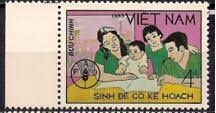Antoine de Saint-Exupéry was a French writer, aviator, and pioneering aviator whose most famous work is the novella "The Little Prince" (Le Petit Prince). He was born on 29 June 1900, in Lyon, France, and disappeared on 31 July 1944, during a reconnaissance mission over the Mediterranean Sea.
Saint-Exupéry developed a passion for aviation at a young age and became a pilot in the French Air Force. He later worked as a commercial pilot for several airlines, flying mail routes in Africa, South America, and the Sahara Desert. His experiences as an aviator greatly influenced his writing and provided the backdrop for many of his works.
"The Little Prince," published in 1943, is Saint-Exupéry's most renowned work and has been translated into numerous languages. It is a poetic and philosophical tale that explores themes of love, friendship, imagination, and the complexities of human nature. The book is beloved by both children and adults worldwide and is considered a classic of children's literature.
In addition to "The Little Prince," Saint-Exupéry wrote several other books, including "Night Flight" (Vol de nuit) and "Wind, Sand and Stars" (Terre des hommes). His writings often reflected his experiences as a pilot and explored themes of adventure, courage, and the human spirit in the face of challenges.
Saint-Exupéry's life was tragically cut short during World War II. He went missing while on a reconnaissance mission, and his death remains a mystery to this day. Despite his untimely passing, Antoine de Saint-Exupéry's contributions to literature and aviation have left a lasting impact, and his works continue to inspire readers around the world.







.jpg)

.jpg)